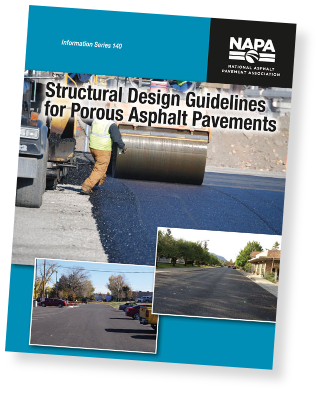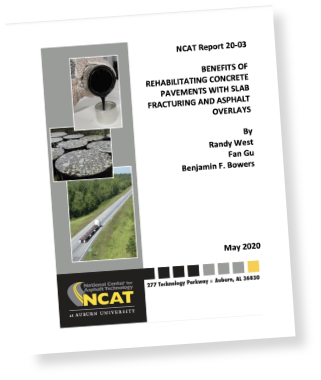
Celebrating PEC’s impact over the past 10 years.
The Pavement Economics Committee (PEC) took shape 10 years ago with an initial investment of around $1 million. “An incredible amount of work and coordination has been done already,” remarked inaugural PEC Chairman Ron White at NAPA’S 2013 Annual Meeting. “Things are moving forward rapidly, and things are getting done.”
Over the past decade, those investments have grown to nearly $5 million to support developing scientific research projects and analysis that position asphalt as the pavement material of choice, strengthen legislative grassroots activities and insulate the industry from harmful legislation on the state and national level, and provide technical knowledge and scientific reports to the industry.
$5M
investments
NAPA: $1.35M
SAPAS: $3.5M
65
projects
54 completed
3 ongoing
4 Wrapping up in 6 months
4 longer than 6 months
$3.9M
expenses paid
$4.6M
projects approved
FEATURED PROJECTS
There are many ways to measure PEC’s impact over the past 10 years. One is to recap projects that have had significant, lasting impact. Below are a few such projects.
ADVANCING LEGISLATIVE ADVOCACY
In 2013, NAPA retained the lobbying firm of Whitmer & Worrall to help the industry avoid pavement-type selection and design mandates. Legislative wins since then include the following:
Prevent federal implementation of Life Cycle Cost Analysis (LCCA) from artificially tipping the scales in favor of another material (2013).
During this campaign-which continues today-we have been very successful educating Congressional Representatives and Senators by emphasizing that the other side wants a federal mandate while NAPA wants local/state/county engineers to make decisions in their states, not in Washington. Defeated efforts
to mandate LCCA in the 2016 transportation appropriations bill.
Helping NAPA PAC achieve success (2013).
Helped organize and implement a fundraiser for Congressman Bill Shuster (R-PA), Chairman of the Transportation & lnfrastructure Committee. The event was the largest fundraiser Chairman Shuster has ever tallied from any one industry, and he personally recognized this achievement during the reception. The Chairman also endorsed NAPA’s position that pavement issues are best left to state highway engineers. Whitmer & Worrall continues to provide intelligence and strategic counsel on NAPA’S PAC activities and overall strategy.
Finding success in the FAST Act (2015).
Worked closely with NAPA to reauthorize the Accelerated lmplementation and Deployment of Pavement Technologies (AID-PT) program in the FAST Act; Whitmer & Worrall continues to make sure that annual appropriations funding is included for the AID-PT research program. Also defeated efforts to include
pavement-type selection mandates in the FAST Act.
Administrative outreach raises NAPA’s priorities regardless of party. Whitmer & Worrall included NAPA’s priorities in the Trump transition document, had NAPA invited to meet with the Trump team and promote our policy goals, and secured White House speakers at the 2017 TCC Fly-In despite the administration not wanting/permitting speakers at industry events. Assisted NAPA with circulating “Build Back Better with Asphalt” legislative package to Biden’s transition team in 2020, indicating NAPA’s desire to support
modern, Sustainable infrastructure and sharing the fact that asphalt is the most recycled product
Defeated competitive maneuvers in the 2018 Farm Bill.
Led a successful legislative strategy to eliminate the creation of a “Concrete Research and Promotional Board” that would’ve resulted in a mandatory check-off aimed at expanding markets for concrete.
The State Report keeps SAPA investors informed (2021).
Created the first official email newsletter for the SAPAs, highlighting key legislative bills at the state level for the SAPAs to monitor and engage throughout the year.
Successful advocacy of once-in-a-generation funding and support for national media coverage (2021).
Worked alongside NAPA on asphalt industry priorities in the Infrastructure Investment and Jobs Act (11JA)/ Bipartisan Infrastructure Law (BIL); participated in and led dozens of calls with Members of Congress and industry allies to generate support for IIJA/BIL. Worked with NAPA to inform The New York Times February 20, 2002, article with a callout on the front page stating, “Lobbyists Pave the Way: Special interests pushed for infrastructure dollars. The asphalt industry may have been the most successful.”
MEASURING THE IMPACT OF SMOOTHNESS
Investigating the influence of pavement type and properties on vehicular rolling resistance by assessing how the pavement properties of texture, smoothness, and stiffness alter vehicle fuel economy and vehicle maintenance costs for passenger cars and trucks. Outcomes were turned into factsheets for DOT, Industry, and Lawmakers to combat competitive attacks and misinformation. Reports include:
GETTING AHEAD OF ENVIRONMENTAL
PRODUCT DECLARATIONS (EPDs)
Emerald Eco-Label, NAPA’s verified EPD tool, makes it easy to quantify the environmental impact of an asphalt mix. Created by industry professionals and stakeholders and evaluated by sustainability experts, the Emerald Eco-Label EPD tool was developed in conformance with the ISO 14025 and 21930 international standards and the Product Category Rules (PCR) for Asphalt Mixtures, which establish the requirements for developing EPDs for asphalt mixtures. PEC funding supported development of the PCR for Asphalt Mixtures, the underlying life cycle assessment (LCA), and the Optimizer function added to the Emerald Eco-Label software in 2022, which gives users a set of tools to better understand and optimize their plant operations and mix designs. For more information on EPDs and Emerald Eco-Label, see Quality, Innovation & Sustainability
OPTIMIZING PAVEMENT DESIGN WITH PAVEXPRESS
Getting a pavement’s structural design correct is immensely cheaper than the alternative, and designing the right pavement is just a click away with PAVEXpress, a free, web-based pavement design Scoping tool for roadway and parking lot pavements. PAVEXpress creates technically sound pavement structural designs for flexible and rigid pavements based on widely accepted standards from the American Association of State Highway Transportation Officials (AASHTO).
PAVEXpress is designed for use by local agencies, engineers, architects, consultants, and engineering students who need a reliable way to quickly determine pavement thickness for a roadway section or project. The software asks users for the inputs required to create technically sound pavement designs, and it suggests industry-accepted defaults where appropriate, although the user can make full use of specific data when it is available.
The third-party verified pavement design tool is based upon design equations from the 1993 AASHTO Guide for the Design of Pavement Structures, the 1998 Supplement to the AASHTO Guide for the Design of Pavement Structures. It includes layered elastic analysis for testing pavement loading, porous pavement design, and perpetual pavement design capabilities.

10,000+
users
18,000+
Sessions in 2022
PAVEXpress incorporates research from Optimizing Flexible Pavement Design and Material Selection (2018).
Learn more:
PUBLISHING THE FIRST DESIGN PROCEDURE FOR POROUS ASPHALT PAVEMENTS
The Structural Design Guidelines for Porous Asphalt Pavements manual was the first document and design tool offered by the industry to help pavement type selection makers design structural thickness of porous pavement presents. It’s an easy-to-apply design procedure for the structural design of porous asphalt pavements using the AASHTO 93 Design Method. site selection, hydrologic design, porous asphalt and asphalt-treated permeable base (ATPB) mixture design, construction, and maintenance are included only insofar as they impact structural design and performance.
The design guide information was added to PAVEXpress as a module allowing
engineers to design the structural thickness of porous asphalt.


REHABILITATING CONCRETE THE RIGHT WAY
The benefits of using asphalt overlays for rehabilitation of Portland cement concrete pavements are grounded in economics and long-term performance. The Federal Highway Administration reports nearly 109,000 lane miles of composite pavements in the United States nearly double the lane miles of PCC-surfaced pavements. However, reflective cracking can lead to shortened performance life. The research report Benefits of Rehabilitating Concrete Pavements with Slab Fracturing and Asphalt Overlays examines slab-fracturing techniques that can be used prior to placement of an asphalt overlay to significantly reduce joint stress and cracks.
Nearly 2/3 of concrete pavements have been overlaid with asphalt.
MAKING SENSE OF LIFE CYCLE COST ANALYSIS
A Review of LCCA Literature: Key Factors and interpretations examines prior LCCA literature for types of costs, length of analysis period, role of discounting, right discount rate, right set of rehabilitation and maintenance costs, and right approach to risk. Further, the authors offer an economics-based approach to key LCCA questions. For example, when and how is “well-being” factored into LCCA calculations?
Conventional guidance from the Federal Highway Administration (FHWA) and industry has supported use of the Office of Management and Budget’s (OMB) real interest rate to calculate the discount rate used in LCCA. However, a reexamination of this guidance is required due to a phenomenon that occurred in December 2020, when a negative real interest rate was reported for the first time in history.
Read the 2-Page Recommendation for Discount Rate
DESIGNING FOR RESILIENCE TO KEEP AMERICA MOVING
When natural disasters strike, state and local agencies rely on resilient pavements for quick fixes and long-term solutions. Resilience is the ability to anticipate, prepare for, and adapt to changing conditions. Withstanding, responding to, and recovering rapidly from disruptions are critical to reopening affected communities. In the wake of natural disasters, emergency vehicles need to deliver services, construction equipment must arrive to make repairs, and other vehicles need to haul away debris. Roads are essential lifelines for construction crews, local businesses, and residents who are eager to return home quickly and resume their normal activities.
Resilient Asphalt Pavements: Industry Solutions for the Resilience Goal provides an overview of what resilience means in the context of asphalt pavements. It highlights the available technologies and practices that can be leveraged as tools to enhance the resilience of asphalt pavements and overall transportation networks. Included is a case study of emergency repairs to interstate highways that were damaged by severe flooding in Iowa during 2019, showcasing the resilient aspects of asphalt pavements.
The findings of this report have been presented at a variety of meetings and events, including the TRB 2021 Annual Meeting, a TRB webinar in 2022, and the ASCE 2022 Annual Convention, influencing hundreds of agency officials and engineers. This project established NCAT as a thought leader in the field of pavement resilience, unlocking additional grant opportunities, such as a $1.5 million research project to evaluate the effects of sea level rise on coastalroads and ferry access infrastructure.
This work has been extended with several case studies examining resilience planning and outcomes in various environments around the country.
SPEEDING UP SAFE
CONSTRUCTION TO SAVE COSTS
One of the key differentiating attributes of asphalt is its speed of construction. To quantify this benefit, PEC funded a research project in which Auburn University’s Department of Civil Engineering created the first nationally transferable, comprehensive, and inclusive metrics that quantify the costs of traffic delay, work zone crashes, and interruptions to local business operations.
Study results document that interactions with drivers and vehicles on project roadways—not solely project construction characteristics—impact road users, crashes, and local businesses. As a result, it is imperative to simulate the traffic that travels through the resulting work zones to accurately estimate time-delay costs—a function of the tool developed in this project.


SPEEDING UP SAFE
CONSTRUCTION TO SAVE COSTS
One of the key differentiating attributes of asphalt is its speed of construction. To quantify this benefit, PEC funded a research project in which Auburn University’s Department of Civil Engineering created the first nationally transferable, comprehensive, and inclusive metrics that quantify the costs of traffic delay, work zone crashes, and interruptions to local business operations.
Study results document that interactions with drivers and vehicles on project roadways—not solely project construction characteristics—impact road users, crashes, and local businesses. As a result, it is imperative to simulate the traffic that travels through the resulting work zones to accurately estimate time-delay costs—a function of the tool developed in this project.

MODERNIZING PAVEMENT DESIGN
SPECIFICATIONS WITH BMD
AASHTO describes Balanced Mix Design (BMD) as “asphalt mix design using performance tests on appropriately conditioned specimens that address multiple modes of distress taking into consideration mix aging, traffic, climate, and location within the pavement structure”—a definition initially established in 2015 by the Federal Highway Administration (FHWA) Expert Task Group (ETG) Balanced Mix Design Task Force. BMD ensures performance, enables innovation, and optimizes a project’s economics. In 2021, NAPA published the BMD Resource Guide and launched a supporting website. See Quality, Innovation, & Sustainability to read about 2022 updates to the BMD Resource Guide.




